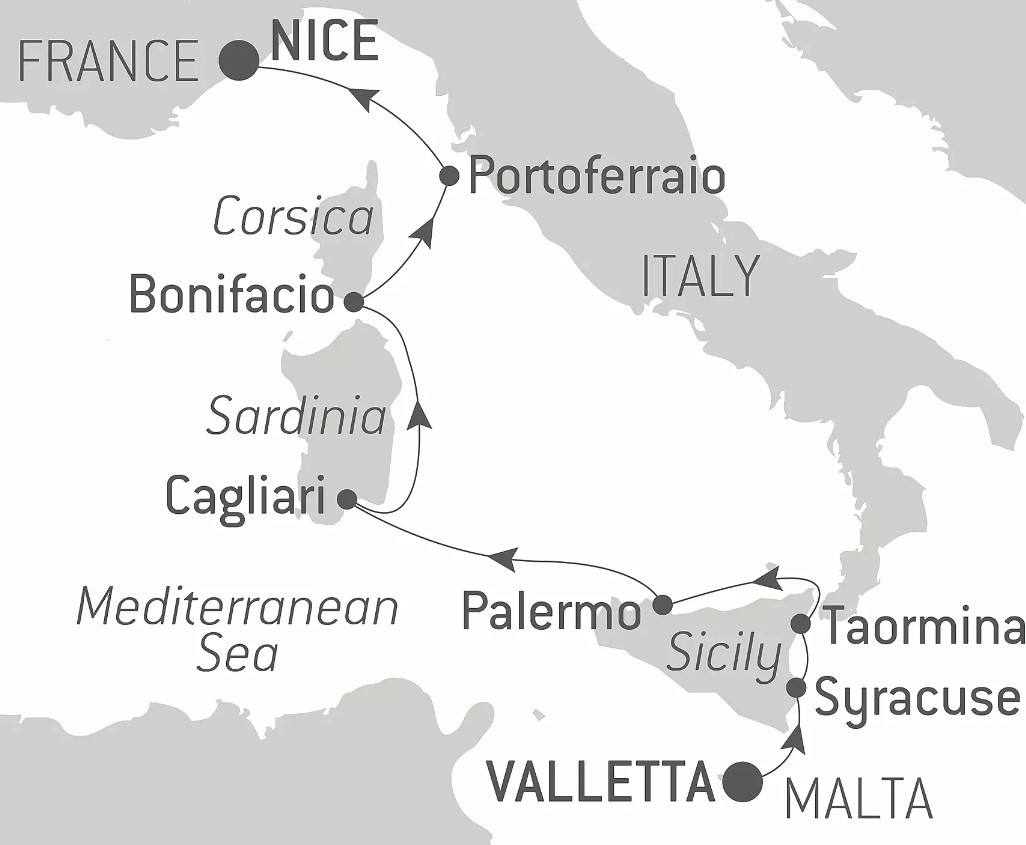In alliance with Smithsonian Journeys.
This cruise is part of a collection of PONANT voyages that are specially-tailored for English-speaking travelers who want to engage with the world. In addition to the usual elements of the PONANT experience, the listed price for these voyages includes transfers to and from the ship, talks and discussions aboard ship by world class experts, and a shore excursion or activity in each port of call that encourages guests to embrace the sights, sounds, tastes, and smells of the local environment and culture.
This voyage in the heart of the Mediterranean explores four islands that, despite their differences, share a history of successive waves of civilizations that have washed over them from prehistoric times to the present. Phoenicians, Greeks, Romans, Arabs, Byzantines, French, and Italians—all have left their mark on the language, art, architecture, and cuisine of Sicily, Sardinia, Corsica, and Elba.
From Valletta, Malta, your discovery of these very special islands begins with three days on the largest of them, Sicily, as you visit the cities of Syracuse, Taormina, and Palermo. In Syracuse, which rivalled Athens as one of the most powerful cities of the ancient world, you may choose to explore the Roman Amphitheater of Augustus and the 15,000 seat Greek theater, or join a walking tour of Ortygia, Syracuse's old town. Or you may choose to travel to nearby Noto, a Baroque World Heritage site, now rebuilt following a devastating earthquake in 1990.
The beautiful resort town of Taormina, perched high on a cliff overlooking the Ionian Sea, is home to a stunning Greek theater, an Odeon from Roman times, buildings blending Arab and Norman cultures, and villas built by European aristocracy in the 18th and 19th centuries. It is also a gateway to Mt. Etna and the vineyards that thrive in the rich volcanic soils of its slopes.
Palermo, Sicily's capital and your final port of call on the island, was founded by the Phoenicians in 827 BC and became one of Europe’s greatest cities in the 12th century, when the Normans took control. Here you may combine Roger II's Cappella Palatina, featuring dazzling mosaics and magnificent inlaid marble floors and walls, with a drive to nearby Monreale to explore its famed Norman cathedral. Or you may choose to focus on Palermo's famous markets and street food, or decide to travel along the coast to the resort town of Cefalù.
Cagliari, Sardinia's capital, is your gateway to the archaeological site of Nora. Founded by Phoenicians in the 8th century BC, it was subsequently taken over by Carthaginians, then by Romans. Explore the remains of Carthaginian warehouses, buildings from the time of the Roman Republic, a Carthaginian-Roman temple, large baths with splendid mosaics, and a theater, almost intact, dating to the time of the Empire.
You will want to be on deck as your ship navigates the narrow waterway that leads to Bonifacio, perched high on cliffs on Corsica's southern coast. Board a mini-train to transport you to the oldest part of the city, where you can stroll through winding medieval lanes of brightly colored houses and admire their fine Gothic architecture. Or you may prefer to explore the small archipelago of the Lavezzi Islands, a nature reserve famous for the Grotte du Sdragonatu (Dragon's Cave) accessible only by sea.
Portoferraio is the main harbor of the island of Elba, the last of the four islands on your journey. Most famous as the site of Napoleon Bonaparte’s exile in 1814-15, Portoferraio was founded by the Medicis in the 16th century. A walking tour of the town includes a visit to Villa dei Mulini, Napoleon’s home during exile, and is followed by a wine tasting and sampling of Tuscan mezze at a local vineyard.
Your voyage ends in Nice, France.
- A voyage specially-tailored for English-speaking travelers including discussions with experts, transfers before and after your cruise, and an included excursion in each port of call.
- Engaging discussions onboard with two Smithsonian Journeys Experts.
- An opportunity to explore five Mediterranean islands on one itinerary: Malta (embarkation point), Sicily, Sardinia, Corsica, and Elba.
- Five UNESCO World Heritage Sites en route: Palermo, Monreale, Taormina, Syracuse, and Noto.
- Well-preserved Greek and Roman ruins in Syracuse and Taormina, and on Sardinia.
- Stunning Byzantine-Arab mosaics in the Cappella Palatina in Palermo and the Norman Cathedral of Monreale.
- The medieval clifftop town of Bonifacio on Corsica.
- Napoleon's villa on Elba.
- Opportunities for tasting wines and local specialties in Noto, Taormina, Palermo, and Portoferraio.
Prices quoted here are often dependent on currency fluctuations. Please check with (01432 507450 or info@small-cruise-ships.com) for the very latest price, which may well be cheaper than the one advertised here.
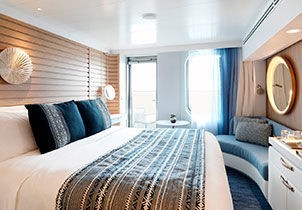
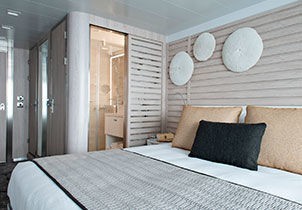





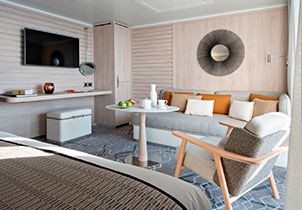
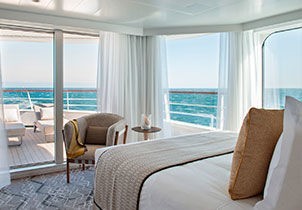
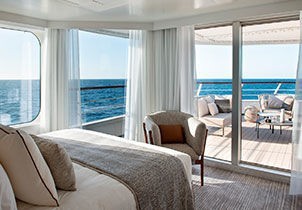
Prices quoted here are often dependent on currency fluctuations. Please check with (01432 507450 or info@small-cruise-ships.com) for the very latest price, which may well be cheaper than the one advertised here.










The whole of the Maltese capital Valletta is UNESCO World Heritage listed and occupies a peninsula in the north-east of the island. From the fountain of Tritons to Saint-Elme fort, there are as many majestic streets as there are narrow staircase vennels to explore. The painted loggia and carved corbels on the tall houses will accompany you in your explorations, and you’ll rarely be bothered by traffic. You can visit the Grandmasters palace decorated with coats of arms and frescoes. Saint-John’s cathedral and the ramparts which have guarded the city since the 16th century are also among the most emblematic sites of the city. Arranged in terraces, the Barrakka Gardens will punctuate your promenade with a green and floral experience.
Its undulating rocky coastline, the endless sandy beaches, the menacing form of Mount Etna which surveys its island like a patriarch, the flowery gardens on the hillside... Sicily lays out its varied landscapes like a shopkeeper displays his wares. Described by Cicero as “the most beautiful city in the world”, Syracuse was one of the most prestigious cities in Sicily and at her height was even a rival for Athens. A central city of Ancient Greece, it was home to a succession of civilisations, each of which has left their mark. The blend of Arabic, Roman, Norman, Byzantine and Spanish cultures makes Syracuse a town that is extraordinarily rich in fragrances, colours and flavours.
Located on Sicily’s eastern coast, in the province of Messina, the seaside town of Taormina is Sicily’s Saint-Tropez, boasting heritage sites, secluded beaches and luxury shopping. You can visit its medieval centre, suspended 300 metres above sea level, where terraces offer a spectacular view of the Mediterranean Sea. Another vestige from its past are the ruins of the Greco-Roman theatre. This extremely well-preserved site attracts visitors who are fascinated by the natural beauty of the area which overlooks a turquoise bay.
Palermo is the guardian of the Sicilian soul. Many have been attracted to this city, the largest capital of the Italian islands. Phoenicians, Carthaginians, Romans, Byzantines, Arabs, Normans... Palermo is a rich culmination of so many cultural influences as seen in the Moorish designs on the cathedral, and the Byzantine mosaics of the Palatine chapel, which is itself housed within the precincts of the Norman palace. You will fall under the spell of the palaces, baroque splendours that grace the town with their obsolete beauty. It is thrilling to stumble upon one of those fabulous markets, high in colour, and headily picturesque.
The capital of Sardinia, Cagliari, like Rome, is built on seven hills. Its Sardinian name means “castle”, in reference to the citadel, its historic centre, which dominates the city. The old ramparts are now pleasant panoramic terraces bordering picturesque streets. The city hosted the Nuragic, Phoenician, Roman and Byzantine civilisations before the rein of the Spanish Hapsburgs and the House of Savoy. The monuments of Cagliari bear the traces of these successive dominations, such as the Bastion of Saint-Rémy or the Sainte-Marie Cathedral. On the sea front, Art Nouveau-style public monuments give way to the Poetto beach, a magnificent stretch of sand that is 8 kilometres long.
The spectacular town of Bonifacio located on the very tip of southern Corsica, clings to a narrow promontory of white rock overhanging the turquoise waters of the Mediterranean. You can admire its limestone cliffs hewn out by the wind, before setting off on a cultural tour of its cultural treasures. From the little paved streets in the ancient Haute Ville, to the promenade on the open-air medieval chemin de ronde, this stunning town will take you on a journey back in time. Frequented or secluded, there are numerous beaches to choose from, all in keeping with the high standards of the “Île de Beauté”.
In the elbow of a creek on the northern coastline of Elba Island, a small corner of paradise awaits in the form of Portoferraio. As you approach its coastlines, you will make out the powerful and majestic contours of its Medici fortresses. Napoleon Bonaparte spent many of his 300 days in exile here. The Palazzina dei Mulini, his first imperial residence, whose gardens offer outstanding views of the sea, is a must-see. Historical treasures are followed by another kind of treasure, namely white sand beaches, and equally tempting local specialities including gurguglione and rice with cuttlefish ink.
Capital of the Cote d’Azur, Nice is surrounded by an amphitheatre of hills and mountains that protects it from the wind. You will probably want to explore the Promenade des Anglais, where you can sit on one of the famous blue chairs laid out opposite the baie des Anges. The Château hill is also a very pleasent place to walk. This is the entrance to the old city, with its bustling markets and regional products along the main street, the Cours Saleya.
Itineraries are subject to change.
Le Bougainville

| Wheelchair accessible cabins | yes |
|---|---|
| Lifts/elevators | yes |
| Built | 2018 |
Featuring innovative and environmentally-friendly equipment, elegantly designed cabins, spacious suites with large windows, and lounge areas that open onto the outside, this new limited-capacity yacht boasting just 92 cabins and suites will offer you a truly unique cruising experience.
As the first ship in a new series that remains true to the Ponant spirit, Le Bougainville will embody the unique atmosphere that is the cruise line’s hallmark: a subtle blend of refinement, intimacy and comfort.
Aboard this ship that flies the French flag, you will experience the incomparable pleasure of an intimate cruise, with the possibility of exploring an ever-increasing range of destinations in an ethnic-chic ambiance with luxury service.
Experience a luxurious setting where the accent is on authenticity and passion for travel.
RESTAURANTS
As it is an essential part of French culture, gastronomy will naturally have pride of place aboard this new ship. Through its two restaurants, Le Bougainville will invite you on a journey to elegance and epicureanism.
In a relaxed atmosphere, a first dining area located on Deck 3 and able to seat 70 will serve grilled meats daily, along with a variety of salads and desserts.
To the back of Deck 4, you will find a 260 m² panoramic restaurant which can accommodate all of our passengers in a single sitting. Designed differently to that on our other ships, this dining area, which opens onto the outside, will have a buffet of salads, desserts and cheeses at your disposal. Our discreet and attentive crew will provide table service for hot meals.
PUBLIC AREAS
Like Le Boréal and its sisterships, Le Bougainville has many common areas that are designed and equipped to meet all of your needs while preserving the intimacy of each passenger.
A 140 m² reception area includes:
A reception/concierge desk, An excursions desk, The ship’s administrative services, The sales office, manned by our Guest Relations Officer, Our 50 m² boutique which sells clothing, jewellery, beauty products, postcards and various accessories, Toilets accessible to passengers with reduced mobility.
A new hydraulic platform with adjustable height provides: Easier boarding than on any other cruise ship, Easier Zodiac embarkation and disembarkation for expeditions, Easier access to the sea for swimming and practising various water sports such as kayaking or paddle-boarding.
A pool deck offering: A pool with a panoramic view, equipped with a counter-current swimming system, A pleasant solarium, An outdoor bar and lounge with armchairs and sofas.
A 200 m² main lounge which can accommodate all of our passengers to share convivial moments and to host activities organised during the day or evening.
Lastly, a theatre that seats 188, equipped with: The latest sound and lighting technology, A LED wall as the stage backdrop, for the projection of high-resolution images and videos.
Please click the following links to read more about Ponant and the other Ponant cruise ships.
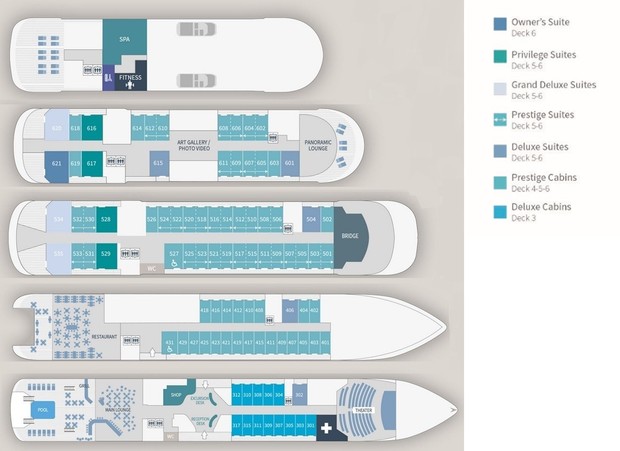
Includes
- accommodation in stateroom,
- the full meal plan,
- the Open Bar: beginning with boarding, and during the duration of the cruise, a wide selection of drinks (mineral water, soft drinks, wine, beer, Charles Heidsieck champagne, spirits, coffee, tea) is served on request and at any time of the day. Certain premium alcoholic beverages on the menu are not included in the Open Bar,
- free Wi-Fi internet access 24 hours a day*,
- activities offered during expedition cruises (see section "Expedition cruises")
- access to all the common areas:
- fitness room, steam room, hair salon, swimming pool (sea water, heated), solarium, lounges, theater, boutique & leisure area.
- A program of onboard enrichment provided by two Smithsonian Journeys Experts
- Transfers and luggage handling from the airport in Nice to the ship on the day of embarkation
- Comprehensive 7-night cruise aboard the deluxe Le Bougainville, with all the amenities for which PONANT ships are famous
- One included shore excursion in each port of call (see “Itinerary” for more information and choice of excursions, if applicable)
- Gratuities for ship crew and for guides and drivers on excursions
- Transfer from the ship to the airport in Valletta at the end of the cruise on the morning of disembarkation

